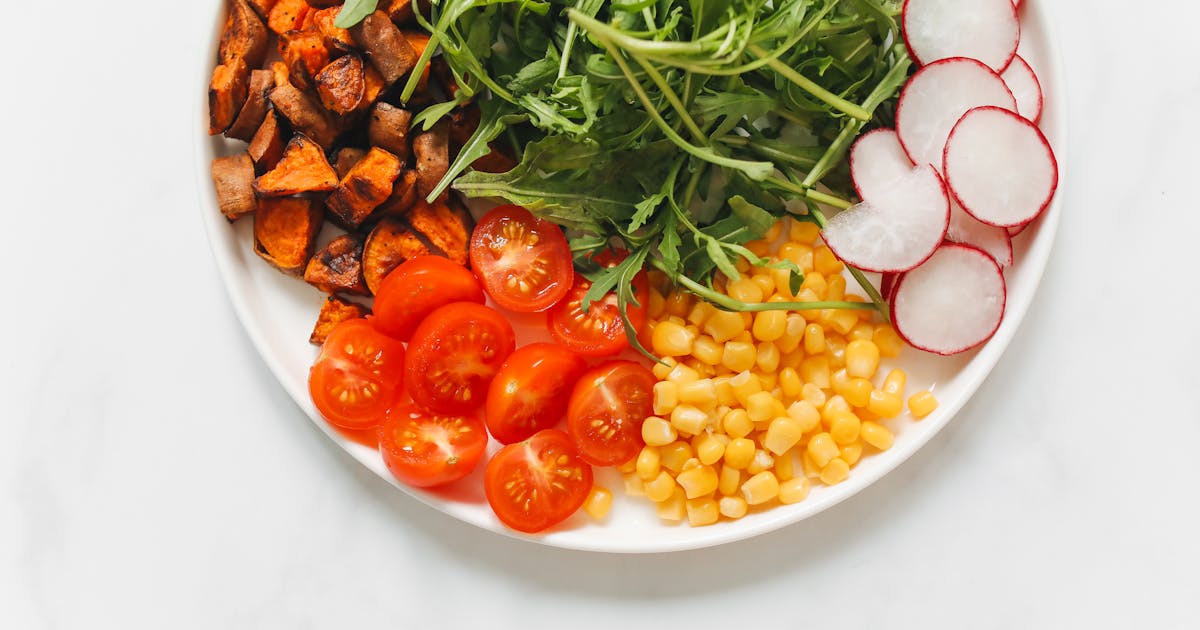It’s not just for the pleasure of eating. Not even purely and simply for health. When it comes to food, we can, in fact, go further. Today we are going to talk about regulatory, building and energetic nutrients. Have you heard about this?
These are three very well-defined categories that, as you can imagine, concern the main function of each nutrient in our body . Therefore, today we are going to explain what each of these categories does and in which foods to find them. Your diet is an important issue here.
What are regulatory nutrients?
As the name suggests, regulatory nutrients have the function of regulating various functions in the human body. But, after all, what functions and how do they do this?
Foods that have these nutrients are full of vitamins, minerals, fiber and water . In short, these 4 things, which do so much for the immune system, we can find in everything of plant origin. Fruits and vegetables are, therefore, essentially regulatory foods.
Functions of regulatory nutrients
So, just look at how many benefits regulatory nutrients give to our body:
- It helps in growth as well as reproduction.
- They help in the production of hormones.
- They also help in the production of red blood cells and antibodies.
- Substrate for bone tissue and teeth.
- Allies in the transmission of nerve impulses.
- It also regulates blood pressure.
- Cleanses toxins from the body.
What are the best foods to absorb regulatory nutrients?
As we have already said, regulatory nutrients are sources of fiber, mineral salts, vitamins and water . So, let’s look at a list divided by each of these 4 things.
- Fibers: carrots, arugula, chicory, watercress, as well as cucumber, spinach and lettuce.
- Minerals: avocado, zucchini, plums, arugula, lentils, chard and, equally, dark vegetables.
- Vitamins: in short, these are fruits – banana, mango, pineapple, strawberry and several others.
- Water: not just water, but isotonic drinks and waterier fruits, such as watermelon.
What are energy foods?
Have you noticed that when you don’t eat foods like bread, potatoes or rice your body feels like it has less energy ? It is because all these foods are full of energy nutrients. All of them are, therefore, carbohydrates and lipids , the ones truly responsible for bringing energy to the cells .
However, as much as we need these foods, the amount of accumulated energy needs to find a way to be spent . This is why these foods, when consumed in excess, are associated with weight gain.
Foods with energetic nutrients
We can’t make a more energetic diet just from rice, bread and potatoes. There are different food groups that you can use to enrich your plate.
Sources of carbohydrates:
- Cereals – as well as rice, corn, couscous, barley, rye, oats, quinoa and pasta.
- Tubers and roots – the various types of potatoes (salty or sweet), cassava, cassava and yams.
- Foods made with wheat – both bread and biscuits, cakes and pasta.
- Legumes – i.e. beans, soybeans, lentils, peas and chickpeas.
Sources of lipids
Lipids basically come from foods with a good dose of fat and oils . But keep an eye on the amount of these foods, as they have twice the calories compared to carbohydrates. Furthermore, excessive consumption brings risks of diseases such as obesity and hypertension. They are:
- Soybean, sunflower, as well as corn oil.
- Olive oil and also palm oil
- The various types of chestnuts, almonds and walnuts
- Margarine and butter
- Chocolate
- Milk cream
Energy fats: there are good ones and bad ones
Our body needs all types of nutrients. But when it comes to fat, some are more like villains . Mainly those processed in industrialized foods.
But when our diet is rich in good fats , they bring several benefits , such as:
- They help the body build new cells .
- Keeps body temperature stable.
- Good fats also protect vital organs .
- Reduce bad cholesterol .
- They strengthen the immune system through enzymes and hormones.
- They help the body to take vitamins.
Foods rich in good fats are mainly the oils that come from nuts and fruits, dark chocolate, and sunflower seeds.
What are builder nutrients?
Now that we’ve talked about regulatory and energy nutrients, it’s the builders’ turn. The name of these nutrients already shows what they do: they build and repair our tissues, such as skin and muscles . We need to have these nutrients to not let these tissues die. It is because of these nutrients that, for example, when we are injured, healing occurs .
Foods with building nutrients are always important and should be consumed daily. However, it is in old age, childhood and adolescence that they make even more of a difference . When a person is getting older, builders therefore prevent them from losing muscle mass and becoming too weak. And at the beginning of life – from pregnancy – these nutrients will help the child grow up healthy . After all, until the age of 18, what most happens to us is growing up.
Building nutrients are also widely used as a strategy for those who want to gain lean mass . In particular, men and women who are going to the gym with the aim of becoming stronger.
Building foods
For these nutrients to fulfill this function, they need to have a lot of protein , such as:
- Eggs.
- Meats of all types.
- Milk and foods derived from milk.
- Legumes such as peanuts, beans, soybeans, among others.
- Oil-rich foods such as chestnuts, hazelnuts, walnuts, pistachios, macadamia nuts, among others.
- Quinoa.
- Seeds such as sesame and linseed.
And who doesn’t eat meat?
People who follow a vegetarian (does not eat any meat) or vegan (nothing of animal origin) diet may end up lacking these nutrients. But they can still reinforce their diet with nutrients from other places. Ideally, these people should always be in line with what a nutritionist recommends specifically for the person regarding the amounts of protein replacement through alternative means.
Tips for maintaining a balanced diet of regulatory, energy and building nutrients
With all this information in hand, get ready to follow a balanced diet , without exaggeration, and that includes everything your body needs .
- Choose, whenever you can, whole foods , that is, those that have not undergone any refinement. They are purer than the regular versions.
- Choose leaner meats , such as fish and chicken, and those that have a lower fat content.
- Swap the fat and oils you use for options that are good fats .
- Eat at regular times , so that your body doesn’t feel hungry for so long.

